 W
WMoses, also known as Moshe Rabbenu, is the most important prophet in Judaism, and an important prophet in Christianity, Islam, the Baháʼí Faith, and a number of other Abrahamic religions. In the biblical narrative he was the leader of the Israelites and lawgiver, to whom the authorship of the first five books of the bible, the Torah, or "acquisition of the Torah from heaven," is attributed.
 W
WAaron was a prophet, high priest, and the elder brother of Moses in the Abrahamic religions. Knowledge of Aaron, along with his brother Moses, comes exclusively from religious texts, such as the Bible and Quran.
 W
WThe ark of bulrushes was a container which, according to the episode known as the finding of Moses in the biblical Book of Exodus, carried the infant Moses.
 W
WAccording to Islamic tradition, Asiya, alternatively Asiyah, sometimes called Asiya bint Muzahim, was the Great Royal Wife of the ancient Egypt's Pharaoh of the Exodus and the adoptive mother of Islamic prophet Mūsā. She is revered by Muslims as one of the four greatest women of all time, and according to a prophetic narration found in Sahih al-Bukhari, the second ever. She is believed to have secretly accepted monotheism after witnessing the miracle of Moses in her husband's court. The tradition holds that Asiya worshipped God in secret and prayed in disguise fearing her husband. She adopted Moses and convinced her husband Pharaoh not to kill him. She died while being tortured by her husband, who had discovered her monotheism and retaliated to her rebellion against his tyranny.
 W
WBalaam is a diviner in the Torah (Pentateuch) whose story begins in Chapter 22 of the Book of Numbers. Every ancient reference to Balaam considers him a non-Israelite, a prophet, and the son of Beor, though Beor is not clearly identified. Though some sources may only describe the positive blessings he delivers upon the Israelites, he is reviled as a "wicked man" in both the Torah and the New Testament. Balaam refused to speak what God did not speak and would not curse the Israelites, even though King Balak of Moab offered him money to do so. But Balaam's error and the source of his wickedness came from sabotaging the Israelites as they entered the Promised Land. According to Revelation, Balaam told King Balak how to get the Israelites to commit sin by enticing them with sexual immorality and food sacrificed to idols. The Israelites fell into transgression due to these traps and God sent a deadly plague to them as a result.
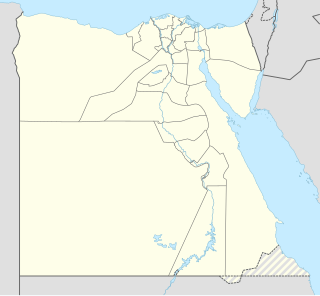 W
WIn the Bible, Mount Sinai is the mountain at which the Ten Commandments were given to Moses by God. In the Book of Deuteronomy, these events are described as having transpired at Mount Horeb. "Sinai" and "Horeb" are generally considered to refer to the same place by scholars.
 W
WThe burning bush is an object described by the Book of Exodus as being located on Mount Horeb. According to the narrative, the bush was on fire, but was not consumed by the flames, hence the name. In the biblical narrative, the burning bush is the location at which Moses was appointed by God to lead the Israelites out of Egypt and into Canaan.
 W
WThe Chronicle of Moses is one of the smaller midrashim. In this midrash, which is written in pure (pseudo-biblical) Hebrew, and which is in many portions only provides a mere hint of verses from the Bible in a close imitation of Biblical style, is presented a history of the life of Moses embellished with many legends.
 W
WThe Crossing of the Red Sea forms an episode in the biblical narrative of The Exodus.
 W
WThe Divine Legation of Moses is the best-known work of William Warburton, an English theologian of the 18th century who became bishop of Gloucester. As its full title makes clear, it is a conservative defence of orthodox Christian belief against deism, by means of an apparent paradox: the afterlife is not mentioned in terms in the Pentateuch, making Mosaic Judaism distinctive among ancient religions; from which, Warburton argues, it is seen that Moses received a divine revelation.
 W
WThe Exodus is the founding myth of the Israelites. It tells of their departure from Egypt, the revelations at biblical Mount Sinai, and their wanderings in the wilderness up to the borders of Canaan. Its message is that the Israelites were delivered from slavery by Yahweh their god, and therefore belong to him by covenant.
 W
WAccording to the Bible, the golden calf was an idol made by the Israelites when Moses went up to Mount Sinai. In Hebrew, the incident is known as ḥēṭ’ ha‘ēggel or the Sin of the Calf. It is first mentioned in Exodus 32:4.
 W
WMount Horeb is the mountain at which the Book of Deuteronomy in the Hebrew Bible states that the Ten Commandments were given to Moses by Yahweh. It is described in two places as הַר הָאֱלֹהִים the "Mountain of God". The mountain is also called the Mountain of YHWH.
 W
WHur was a companion of Moses and Aaron in the Hebrew Bible. He was a member of the Tribe of Judah. His identity remains unclear in the Torah itself, but it is elaborated in rabbinical commentary.
 W
WMūsā ibn ʿImrān known as Moses in Judaeo-Christian theology, considered a prophet and messenger in Islam, is the most frequently mentioned individual in the Qur'an, his name being mentioned 135 times. The Quran states that Musa was sent by Allah to the Pharaoh of Egypt and his establishments and the Israelites for guidance and warning. Musa is mentioned more in the Qur'an than any other individual, and his life is narrated and recounted more than that of any other prophet. According to Islam, all Muslims must have faith in every prophet (nabi) and messenger (rasul) which includes Musa and his brother. The Qur'an states:And mention in the Book, Moses. Indeed, he was chosen, and he was a messenger and a prophet. And We called him from the side of the mount at [his] right and brought him near, confiding [to him]. And We gave him out of Our mercy his brother Aaron as a prophet.
 W
WIn the Hebrew Bible, Jethro was Moses' father-in-law, a Kenite shepherd and priest of Midian, but different from Reuel. In Exodus, Moses' father-in-law is initially referred to as "Reuel" but then as "Jethro". He was also identified as Hobab in the Book of Numbers 10:29.
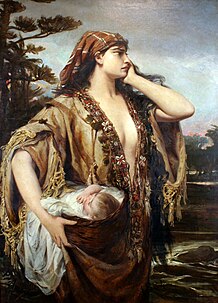 W
WAccording to the Bible, Jochebed was a daughter of Levi and mother of Aaron, Miriam and Moses. She was the wife of Amram, as well as his aunt. No details are given concerning her life. According to Jewish legend, Moses's Mother is buried in the Tomb of the Matriarchs, in Tiberias. She is praised for her faith in God.
 W
WJoshua or Jehoshua is the central figure in the Hebrew Bible's Book of Joshua. According to the books of Exodus, Numbers and Joshua, he was Moses' assistant and became the leader of the Israelite tribes after the death of Moses. His name was Hoshea the son of Nun, of the tribe of Ephraim, but Moses called him Joshua, the name by which he is commonly known. According to the Bible he was born in Egypt prior to the Exodus.
 W
WAl-Kahf is the 18th chapter (sūrah) of the Quran with 110 verses (āyāt). Regarding the timing and contextual background of the revelation, it is an earlier "Meccan surah", which means it was revealed in Mecca, instead of Medina.
 W
WMatthew 8:4 is the fourth verse of the eighth chapter of the Gospel of Matthew in the New Testament. This verse concludes the miracle story of Jesus cleansing a leper, the first of a series of miracles in Matthew.
 W
WMidrash Petirat Moshe or Midrash on the Death of Moses is one of the smaller midrashim. This midrash describes in great detail the last acts of Moses and his death, at which the angels and God were present. There are several recensions of it, dating to between 7th and 11th centuries. The first, published at Constantinople in 1516 begins with a brief exegesis by R. Samuel Naḥmani and R. Tanhuma of the first verse of the pericope "V'Zot HaBerachah", closing with its last verses, and doubtless intended for Simhat Torah. In 1693, the Midrash was translated into yiddish by Aaron ben Samuel, leading to its popularization with women.
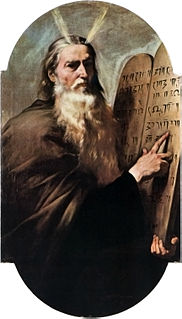 W
WMosaic authorship is the traditional belief that the Torah, the first five books of the Hebrew Bible/Old Testament, were dictated to Moses by God. The books do not name any author, as authorship was not considered important by the society that produced them, and it was only after Jews came into intense contact with author-centric Hellenistic culture in the late Second Temple period that the rabbis began to find authors for their scriptures. The tradition that Moses was this author probably began with the law-code of the Book of Deuteronomy and was then gradually extended until Moses, as the central character, came to be regarded not just as the mediator of law but as author of both laws and narrative.
 W
WMoses and Monotheism is a 1939 book about monotheism by Sigmund Freud, the founder of psychoanalysis. It shocked many of its readers because of Freud's suggestion that Moses was actually born into an Egyptian household, rather than being born as a Hebrew slave and merely raised in the Egyptian royal household as a ward. It is Freud's final original work and it was completed in the summer of 1939 when Freud was, effectively speaking, already "writing from his death-bed."
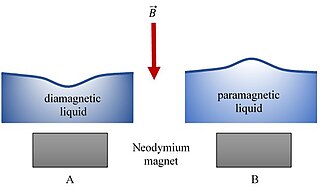 W
WIn physics, Moses effect is a phenomenon of deformation of the surface of a diamagnetic liquid by a magnetic field. The effect was named after Biblical figure Moses, inspired by the crossing of the Red Sea in the Old Testament.
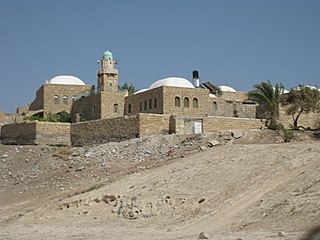 W
WNabi Musa is the name of a site in the West Bank believed to be the tomb of Musa (Moses). It is also the name of a seven-day long religious festival that was celebrated annually by Palestinian Muslims, beginning on the Friday before Good Friday in the old Greek Orthodox calendar. Considered "one of the most important Muslim pilgrimages in Palestine", the festival centered on a collective pilgrimage from Jerusalem to what was understood to be the Tomb of Moses, near Jericho. A great building with multiple domes marks the mausoleum of Moses. A number of 66 Palestinian households has been counted in 2007 at the locality of Nabi Musa, in contrast to three male individuals in 1931.
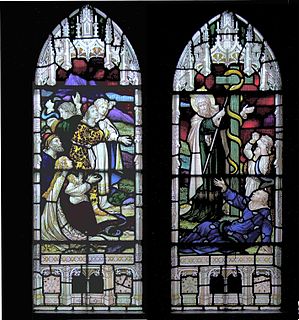 W
WIn the biblical Books of Kings, the Nehushtan is the derogatory name given to the bronze serpent on a pole first described in the Book of Numbers which God told Moses to erect so that the Israelites who saw it would be protected from dying from the bites of the "fiery serpents", which God had sent to punish them for speaking against him and Moses. In Kings, King Hezekiah institutes an iconoclastic reform that requires the destruction of "the brazen serpent that Moses had made; for unto those days the children of Israel did burn incense to it; and it was called Nehushtan". The term is a proper noun coming from either the word for "snake" or "brass", and thus means "The (Great) Serpent" or "The (Great) Brass".
 W
WPassover, also called Pesach, is a major Jewish holiday that occurs in the spring on the 15th day of the Hebrew month of Nisan. One of the biblically ordained Three Pilgrimage Festivals, Passover is traditionally celebrated in the Land of Israel for seven days and for eight days among many Jews in the Diaspora, based on the concept of yom tov sheni shel galuyot.
 W
WThe Pharaoh's daughter in the story of the finding of Moses in the biblical Book of Exodus is an important, albeit minor, figure in Abrahamic religions. Though some variations of her story exist, the general consensus among Jews, Christians, and Muslims is that she is the adoptive mother of the prophet Moses. Muslims identify her with Asiya, the Great Royal Wife of the pharaoh. In either version, she saved Moses from certain death from both the Nile river and from the Pharaoh. As she ensured the well-being of Moses throughout his early life, she played an essential role in lifting the Hebrew slaves out of bondage in Egypt, their journey to the Promised Land, and the establishment of the Ten Commandments.
 W
WThe Plagues of Egypt, in the story of the book of Exodus, are ten disasters inflicted on Egypt by the God of Israel in order to force the Pharaoh to allow the Israelites to depart from slavery; they serve as "signs and marvels" given by God to answer Pharaoh's taunt that he does not know Yahweh: "The Egyptians shall know that I am the LORD".
 W
WAllusions in rabbinic literature to the biblical character Moses, who led the people of Israel out of Egypt and through their wanderings in the wilderness, contain various expansions, elaborations and inferences beyond what is presented in the text of the Bible itself.
 W
WMount Sinai, traditionally known as Jabal Musa, is a mountain in the Sinai Peninsula of Egypt that is a possible location of the biblical Mount Sinai, the place where Moses received the Ten Commandments.
 W
WThe Song of the Sea is a poem that appears in the Book of Exodus of the Hebrew Bible, at Exodus 15:1–18. It is followed in verses 20 and 21 by a much shorter song sung by Miriam and the other women. The Song of the Sea was reputedly sung by the Israelites after their crossing the Red Sea in safety, and celebrates the destruction of the Egyptian army during the crossing, and looks forward to the future conquest of Canaan.
 W
WThe Staff of Moses is a staff mentioned in the Bible and Quran as a walking stick used by Moses. According to the Book of Exodus in the Bible, the staff was used to produce water from a rock, was transformed into a snake and back, and was used at the parting of the Red Sea. Whether or not Moses' staff was the same as that used by his brother Aaron has been debated by rabbinical scholars.
 W
Waṭ-Ṭūr is the 52nd chapter of the Quran with 49 ayat. The surah that opens with the oath of the Islamic divine character swearing by the Mount of Sinai, where the Torah was revealed to Moses. It takes its name from "the mount" (ṭūr) mentioned in Ayah#1. The surah which addresses many of the arguments put to the Prophet by the disbelievers of Mecca. The bliss that will be enjoyed by the believers is contrasted to the torments of Hell, and the Prophet is urged to bide his time, to continue to deliver his message, and to wait with confidence for God's judgement. God swears by, among other things, Mount Sinai, that the Day of Judgement is inevitable.
 W
WṬā Hā is the 20th chapter (sūrah) of the Qur'an with 135 verses (āyāt). It is named "Ṭā Hā" because the chapter starts with the Arabic "mysterious letters": طه (Taha) which is believed one of the names of the prophet Muhammed. Luxenberg's perspective is that the letters Ta-Ha could mean "marvel" or "be amazed!" in Aramaic.
 W
WThe Ten Commandments, also known as the Decalogue, are a set of biblical principles relating to ethics and worship. These are fundamental to both Judaism and Christianity. The text of the Ten Commandments appears twice in the Hebrew Bible: at Exodus 20:2–17 and Deuteronomy 5:6–17.
 W
WThe transfiguration of Jesus is a story told in the New Testament when Jesus is transfigured and becomes radiant in glory upon a mountain. The Synoptic Gospels describe it, and the Second Epistle of Peter also refers to it. It has also been hypothesized that the first chapter of the Gospel of John alludes to it.
 W
WIn the Book of Revelation, the two witnesses are two of God's prophets who are seen by John of Patmos, during the "Second woe" recorded in Revelation 11:1-14. They have been variously identified by theologians as two people, as two groups of people, or as two concepts. Dispensationalist Christians believe that the events described in the Book of Revelation will occur before and during the Second Coming. The two witnesses are never identified in the Christian Bible. Some believe they are Enoch and Elijah. as in the Gospel of Nicodemus, since they are the only two that did not see death as required by the Scriptures. Others believe them to be Moses and Elijah because they appeared during the transfiguration of Jesus, or because Enoch was not Abraham's descendant. Some also believe that they are Moses and Elijah due to the description of what they are to do. They have the power to shut the heavens (Elijah) and turn water into blood (Moses)
 W
WZipporah or Tzipora is mentioned in the Book of Exodus as the wife of Moses, and the daughter of Reuel/Jethro, the priest and prince of Midian. In the Book of Chronicles, two of her grandsons are mentioned: Shebuel, son of Gershom, and Rehabiah, son of Eliezer.
 W
WZipporah at the inn is the name given to an episode alluded to in three verses of the Book of Exodus. This much-debated passage is one of the more perplexing conundrums of the Torah.